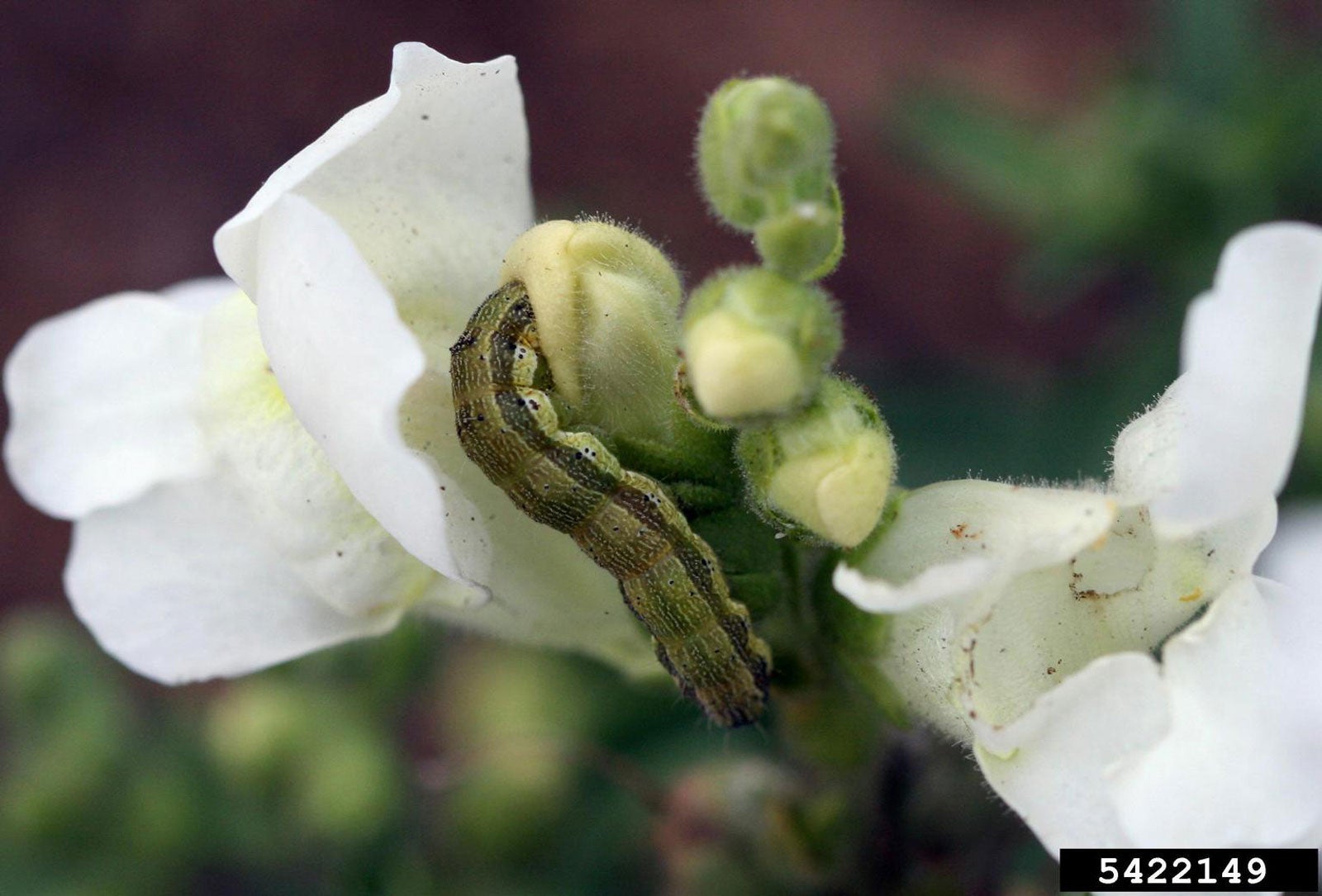Preventing Budworm Damage: Tips For Controlling Budworms


Bedding plants like geraniums, petunias and nicotiana can create a riot of color when planted en masse, but gardeners aren't the only ones drawn to these bright and prolific flowers. Feeding damage caused by budworm caterpillars is on the rise across the country, causing alarm and panic in the gardening community -- so much so that some gardeners are refusing to grow the most frequent plant victims of budworm damage.
What are Budworms?
Budworms are moth caterpillars that chew their way into the tightly coiled buds of flowers and slowly eat them from the inside out. Budworm caterpillars start life as tiny larvae that measure less than 1/16 inch (1.5 ml.) long, but grow up to 2 inches (5 cm.) over the course of the summer. These larvae start out cream colored with brown heads and light colored stripes, but mature into colors ranging from green to rust to black. Identification should be simple -- they'll be the caterpillars eating your flowers from the inside out. Budworms feed on all types of vegetative buds, but primarily focus on flower buds and maturing ovaries. Flower buds often fail to open, but those that do look ragged from all the petal chewing. As the summer progresses, the damage gets more severe. Fortunately, these pests only feed for about a month before dropping into the soil to pupate, giving your flowers a chance to recover. Two generations a year are common, with the second generation being much more damaging than the first.
How to Kill Budworms
Controlling budworms is all about timing. Since the larvae spend most of their time protected by the buds where they feed, treatment after hatching does little good to destroy populations. Instead, applying pesticides before hatching or to newly emerged caterpillars is the best solution. Synthetic pesticides like permethrin, esfenvalerate, cyfluthrin, and bifenthrin require fewer applications because they last longer in the environment, but they can be dangerous to beneficial insects like bees, especially if part of your flower garden is already in bloom. Bacillus thuringiensis (Bt) can be used safely against budworms, but timing is everything. Monitor your plants carefully for larval emergence and apply Bt as soon as the first few eggs start to hatch. Bt has a very short life when exposed to air, but it will target the caterpillars without damaging other insects. Other, safer methods of control include checking buds for tiny holes and removing those that are infected in hopes of breaking the life cycle. Cold winters are believed to be devastating to pupating budworms, allowing potted plants to experience temperatures of 20 F. (-6 C.) and lower can reduce the next season's budworm population.
Gardening tips, videos, info and more delivered right to your inbox!
Sign up for the Gardening Know How newsletter today and receive a free copy of our e-book "How to Grow Delicious Tomatoes".

Kristi Waterworth was a regular contributor to Gardening Know How for many years, answering countless queries on plant pests and diseases.
-
 My Homemade Orchid Fertilizer Always Brings More Blooms – Here's The Easy Recipe That Transforms Plants
My Homemade Orchid Fertilizer Always Brings More Blooms – Here's The Easy Recipe That Transforms PlantsScientist-turned-gardener Mary Ellen Ellis shares her tried-and-tested DIY orchid fertilizer recipe, plus more ingredients to try for healthy, happy plants.
By Mary Ellen Ellis
-
 Looking For Plants To Give You The Soft And Fuzzies? Try These 5 Fuzzy Leaf Plant Options
Looking For Plants To Give You The Soft And Fuzzies? Try These 5 Fuzzy Leaf Plant OptionsLovers of texture, drama, silver foliage and tactile plants will adore these special sensory garden additions. These fuzzy leaf plant options will leave you all aglow
By Susan Albert